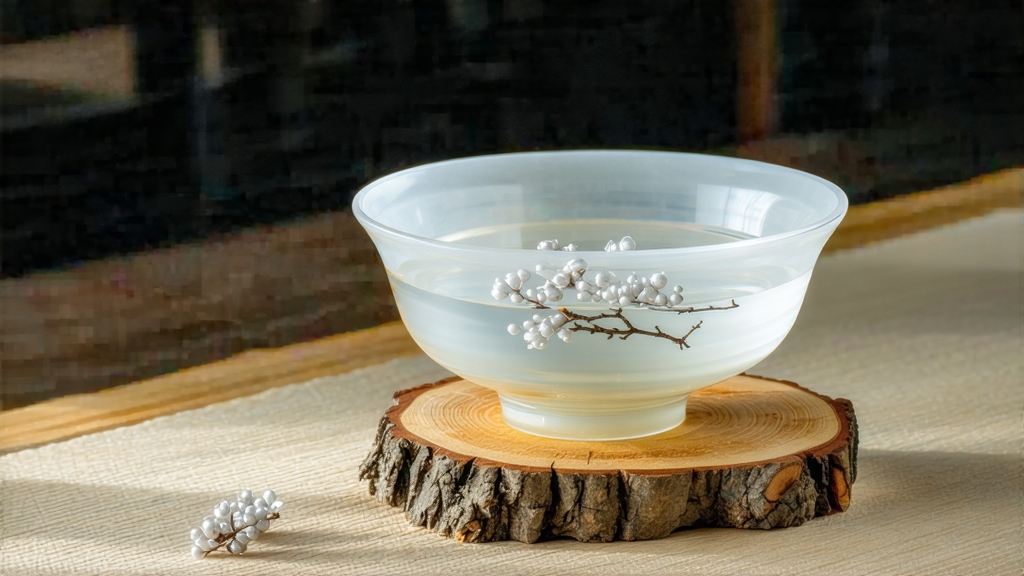
Among the six great families of Chinese tea, white tea is the least theatrical yet the most haunting: it is picked, withered, and dried—nothing else—yet the cup can taste like mountain air after rain, like pear blossom, like the memory of snow. Within this minimalist lineage, Bai Hao Yin Zhen—“Silver Needle,” or more poetically “White Down Silver Needle”—sits on the throne. Made from nothing but unopened buds, it is the most exclusive expression of Chinese leaf, a tea that was once pressed into silver ingot moulds and carried on mule-back to the desert borders of the Tang, a tea that later sailed to the courts of Europe tucked between layers of silk and porcelain. Today it is still harvested by finger-nail and moonlight, still dried by breeze and pine-fire, still judged by the angle at which the bud stands upright when dropped into a glass of spring water.
History: from imperial elixir to modern icon
The first written record appears in the Song-era “Treatise on Tea” by Emperor Huizong himself, who praised the “white downy tips” presented by the prefect of Fujian. By the Ming dynasty, the buds were being sun-withered on bamboo trays in the coastal county of Fuding, then packed into lead-lined chests for the caravan trade. European merchants encountering the tea in Canton christened it “Pekoe,” a corruption of the Amoy dialect phrase “pek-ho”—white down. In 1891, a Fuding merchant named Mr. Shi brought Silver Needle to the World Expo in Hamburg; the judges, expecting green or black, found instead a liquor so pale it looked like water, yet so fragrant it perfumed the entire hall. The tea won gold, and a legend was sealed. Modern archaeochemistry has since shown that the buds contain up to 3.8 % amino acids—almost double that of top-grade Dragon Well—explaining both the sweetness and the narcotic calm that Silver Needle imparts.
Terroir: why Fuding and Zhenghe argue in dialect
Authentic Silver Needle comes only from northern Fujian: the granite ridges of Fuding, where the East China Sea sends salt-laden fogs through the tea gardens at dawn, and the slightly inland valleys of Zhenghe, where colder nights slow oxidation and thicken the bud’s cuticle. The cultivar is equally specific: Fuding Da Bai Hao—“Big White Down”—a large-bud variety whose pubescent reverse side looks like frost on a plum. In early March, when five consecutive days hold steady at 12–18 °C and the buds reach 2.5–3 cm but have not yet unfurled, the garden manager gives the order. Pickers—usually women in wide straw hats—move down the rows at dawn, plucking with a twist that avoids the lignified stem. A full kilogram of finished tea demands 30,000 buds, roughly one afternoon’s work for six skilled hands.
Craft: the art of doing almost nothing
White tea’s motto is “let nature finish what the leaf began.” The buds are spread on water-reed screens or modern mesh trays exactly one layer thick; any overlap creates bruising that will later taste of boiled pumpkin. For the next 36–48 hours they wither under a choreography of sun, shade, and breeze. In Fuding, the classic method is “sun-wither followed by low-fire bake”: three hours of gentle February sun, then stacking the trays in a pine-wood loft whose temperature drifts between 28 and 32 °C. A charcoal brazier raised 70 cm below the bamboo floor provides a background warmth that drives moisture from the core without caramelising the surface. When the bud’s moisture drops to 8–9 %, the tea is rested for three days in linen sacks so that residual water migrates outward, then baked once more at 45 °C for 20 minutes. The goal is a bud that snaps cleanly, yet still carries a silvery halo of pubescence—like a moonlit spear.
Grades and micro-lots
Although the national standard recognises only two grades—Special and First—connoisseurs speak of three micro-lots. “Tribute Needle” is harvested on the first three days of the season, when the bud’s amino-acid peak coincides with the lowest possible catechin astringency; the cup is almost colourless, yet brothy with umami.